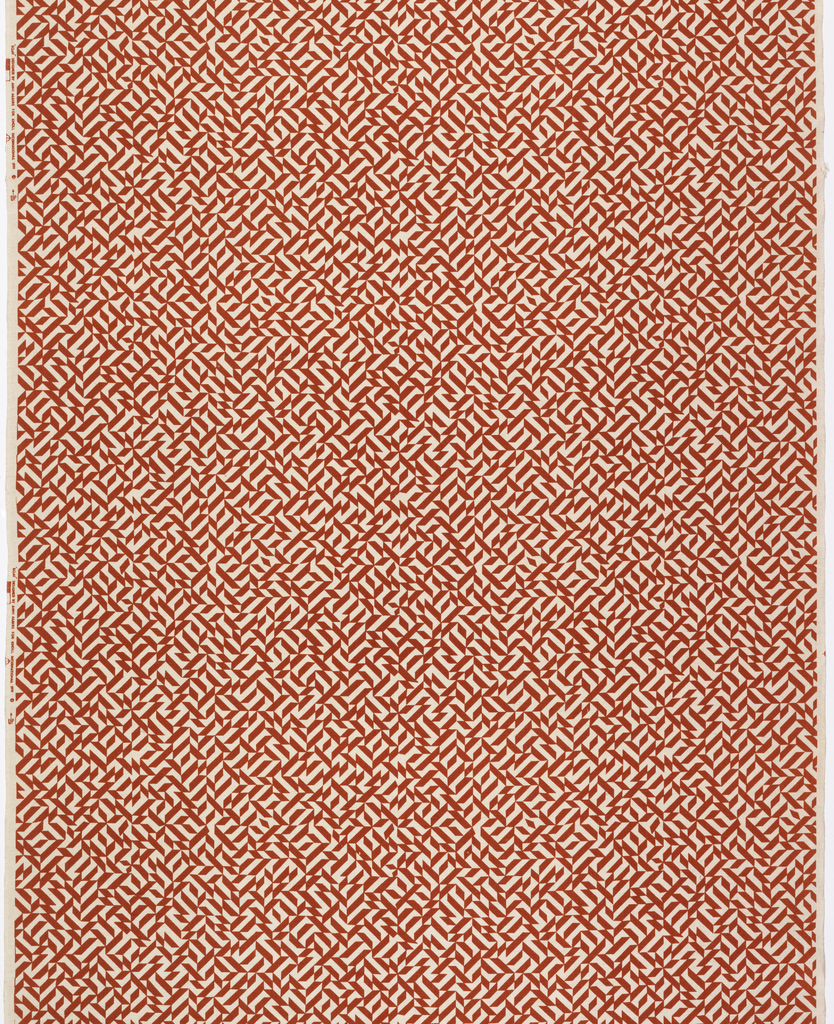Anni Albers used her art to introduce order and clarity into an otherwise unstable and chaotic world. She grew up in Berlin during World War I and in 1933 was forced to leave Germany for the US after the Nazis came to power and closed the Bauhaus where she and her husband, Josef Albers, were teaching. She had joined the Bauhaus as a student in 1922. There she studied weaving and is best known for her woven art, produced over a weaving career of almost fifty years.
It was not until 1963 that Albers, after accompanying Josef to a lithography workshop, began working in graphic arts. She gave up weaving entirely in 1970 to focus her creative energy on printmaking. The pattern repeat for this printed Knoll fabric is based on Albers’s screenprint and photo-offset work, PO II (1973).
The pattern evidences Anni Albers’ mastery of the language of modular, geometric forms, a language she came to understand from studying with Paul Klee, one of her Bauhaus instructors, and used to great effect in her woven art. Éclat is a French word meaning sparkle or radiance but it also means sliver or shard. The pattern is a sparkling scattering of bright orange shards against an off-white ground. But importantly, there is nothing random about it. The abstract shapes are sharp, precise, and carefully chosen: Albers uses only isosceles trapezoids and parallelograms, in a finite number of sizes. These forms are carefully arranged according to subtle principles of repetition and rotation into elegantly interlocking groups. We sense these principles even if we cannot identify them precisely. No two groupings (within each of the fabric’s repeats) are exactly the same and the boundaries of the groups are deliberately ambiguous.
So while Albers sought to organize the world, she also sought to preserve some of its mystery. Her work was animated by what she called “a concern for order in a not too obvious way, an order puzzling to the onlooker, so that he will return again and again.” And with Éclat, with only two colors and a limited number of elements, she has clearly succeeded in creating a timeless pattern of great complexity that continually challenges the viewer.
Maleyne M. Syracuse is a candidate for a Masters Degree in the History of Decorative Arts at the Cooper-Hewitt National Design Museum/Parsons New School for Design and is President of the Board of Directors of Peters Valley Craft Center. She recently retired as a Managing Director in the Investment Bank at JP Morgan and continues to work part-time as an independent professional in corporate finance and investment management.
